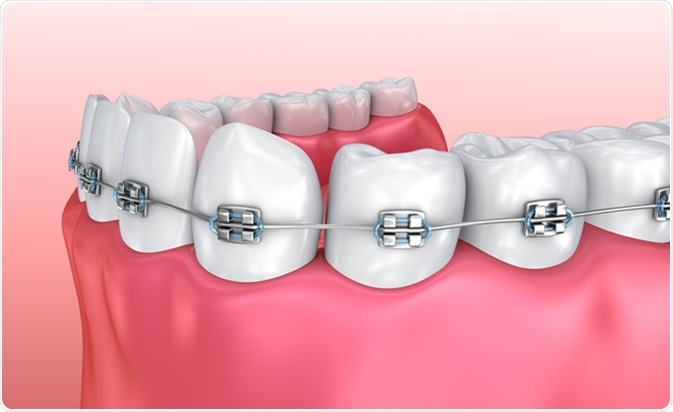Discovering the Right Cumming Orthodontist for Your Braces and Aligners Requirements
Discovering the Right Cumming Orthodontist for Your Braces and Aligners Requirements
Blog Article
Comprehensive Guide to Orthodontics Procedures for Remedying Dental Imbalances
In the world of orthodontics, the trip to achieving a perfectly lined up smile includes a myriad of treatments customized to remedy oral imbalances. From typical dental braces to invisible aligners and even surgical options, the field of orthodontics uses an array of remedies to address varying degrees of oral irregularities. Understanding the complexities of each treatment, including their devices, advantages, and prospective downsides, is crucial in making notified decisions about one's orthodontic treatment. As we browse via the thorough guide to orthodontic procedures for dealing with oral imbalances, the intricate details of each technique will unfold, clarifying the course towards a unified and practical dental positioning.
Orthodontic Procedures Review

In addition to clear aligners and typical braces, orthodontists may additionally recommend other treatments like headgear, palatal expanders, or retainers to deal with details alignment problems (cumming orthodontics). These procedures are tailored to every patient's special demands and might involve a combination of therapies to attain the desired results. Routine changes and monitoring are crucial components of orthodontic therapy to ensure development gets on track and to make any essential modifications along the method. By undertaking orthodontic procedures, individuals can not just achieve a straighter grin however also improve their general oral health and feature.
Standard Braces: How They Work
When considering orthodontic therapies for dental imbalances, conventional braces attract attention as a tried and true method for dealing with teeth positioning. Traditional dental braces include brackets, wires, and bands that interact to apply continuous stress on the teeth, progressively relocating them into the preferred alignment. The brackets are affixed to the teeth using an unique adhesive, and the cords are threaded through the braces. By adjusting the tension of the cords, orthodontists can control the instructions and pressure put on each tooth, assisting them into proper placement over time.
As pressure is applied to the teeth through the braces, the bone surrounding the teeth is improved to sustain the brand-new tooth settings. Individuals will need regular adjustments at the orthodontist's workplace to make certain the dental braces continue to apply the correct stress for reliable teeth motion.
Unseen Aligners: Benefits And Drawbacks
These clear, custom-made trays are virtually unseen when put on, making them an attractive option for individuals looking for an extra visually pleasing orthodontic treatment. Patients can remove the aligners prior to consuming or cleaning their teeth, reducing the threat of food getting stuck in the device and simplifying the cleaning procedure.

Surgical Orthodontic Options
Surgical interventions in orthodontics existing feasible alternatives for dealing with intricate oral misalignments that may not be effectively solved via traditional orthodontic treatments. While traditional braces and invisible aligners can Going Here fix lots of orthodontic concerns, particular situations require surgical intervention to attain ideal results. Surgical orthodontic alternatives are normally recommended for severe malocclusions, substantial jaw discrepancies, and cases where the underlying bone framework requires alteration to attain proper positioning.
One typical medical orthodontic procedure is orthognathic surgery, which includes rearranging the jaws to fix functional concerns such as difficulty eating or talking. This surgery is commonly executed in collaboration with an orthodontist who helps line up the teeth prior to and after the treatment. Surgical orthodontics might likewise include treatments to subject influenced teeth, get rid of excess periodontal cells, or reshape the jawbone to create a more unified face account.
Before considering surgical orthodontic alternatives, clients undertake a comprehensive analysis to determine the need and possible benefits of such interventions. braces. While surgical treatment may seem difficult, it can significantly boost both the feature and aesthetics of the smile in cases where traditional orthodontic treatments fail
Retainers and Post-Treatment Treatment

Failure to comply with post-treatment treatment directions can result in relapse, where the teeth gradually relocate back towards their original positions. Constant retainer wear, great dental health, and regular oral check-ups are crucial for preserving the results achieved via orthodontic surgical procedure and making certain the lasting security of the dealt with dental positioning.
Final Thought
To conclude, orthodontic procedures use various options for correcting oral imbalances. Typical braces use metal brackets and cords to change teeth right into appropriate placement. Unnoticeable aligners provide an even more very discreet alternative but may not be appropriate for all cases. Surgical orthodontic choices are readily available for a lot more extreme imbalances. Retainers are commonly utilized post-treatment to keep the new alignment. Generally, orthodontic procedures can effectively boost oral wellness and aesthetic appearance.
As we browse through the extensive guide to orthodontic treatments for dealing with dental misalignments, the complex information of each technique will certainly unfold, shedding light on the course toward a functional and harmonious dental positioning. - cumming orthodontics
One of the most typical orthodontic therapies is the usage of dental braces, weblink which are composed of steel brackets and wires that apply gentle pressure to gradually move teeth right into the preferred placement.When taking into consideration orthodontic treatments for dental misalignments, conventional braces stand out as a time-tested technique for remedying teeth placing. In addition, unnoticeable aligners may not be appropriate for intricate orthodontic concerns that call for useful site even more substantial teeth activity, as they are typically recommended for mild to moderate cases. Retainers are customized orthodontic devices designed to hold teeth in their fixed settings after the completion of orthodontic treatment.
Report this page